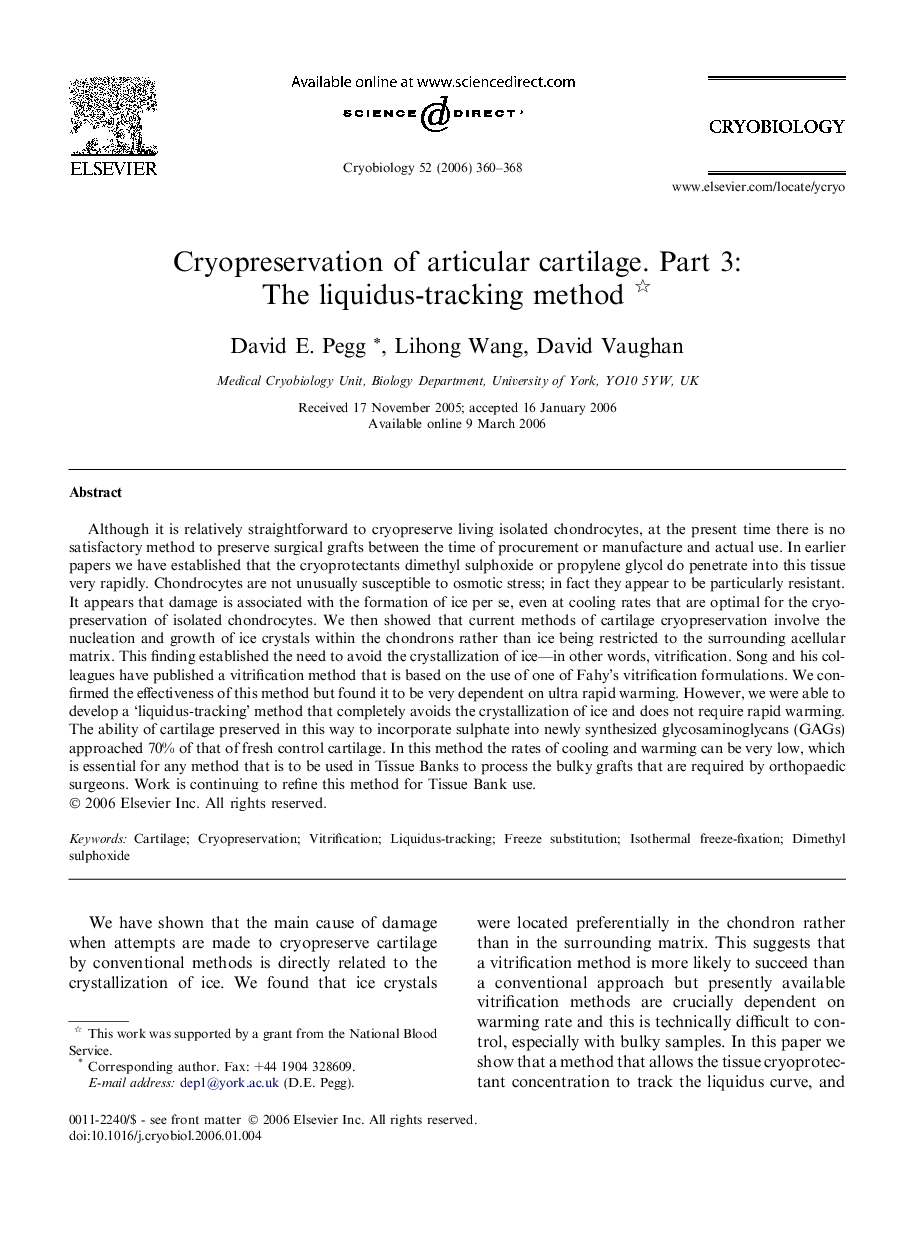| کد مقاله | کد نشریه | سال انتشار | مقاله انگلیسی | نسخه تمام متن |
|---|---|---|---|---|
| 2169604 | 1092950 | 2006 | 9 صفحه PDF | دانلود رایگان |

Although it is relatively straightforward to cryopreserve living isolated chondrocytes, at the present time there is no satisfactory method to preserve surgical grafts between the time of procurement or manufacture and actual use. In earlier papers we have established that the cryoprotectants dimethyl sulphoxide or propylene glycol do penetrate into this tissue very rapidly. Chondrocytes are not unusually susceptible to osmotic stress; in fact they appear to be particularly resistant. It appears that damage is associated with the formation of ice per se, even at cooling rates that are optimal for the cryopreservation of isolated chondrocytes. We then showed that current methods of cartilage cryopreservation involve the nucleation and growth of ice crystals within the chondrons rather than ice being restricted to the surrounding acellular matrix. This finding established the need to avoid the crystallization of ice—in other words, vitrification. Song and his colleagues have published a vitrification method that is based on the use of one of Fahy’s vitrification formulations. We confirmed the effectiveness of this method but found it to be very dependent on ultra rapid warming. However, we were able to develop a ‘liquidus-tracking’ method that completely avoids the crystallization of ice and does not require rapid warming. The ability of cartilage preserved in this way to incorporate sulphate into newly synthesized glycosaminoglycans (GAGs) approached 70% of that of fresh control cartilage. In this method the rates of cooling and warming can be very low, which is essential for any method that is to be used in Tissue Banks to process the bulky grafts that are required by orthopaedic surgeons. Work is continuing to refine this method for Tissue Bank use.
Journal: Cryobiology - Volume 52, Issue 3, June 2006, Pages 360–368